#rand ravich
Text

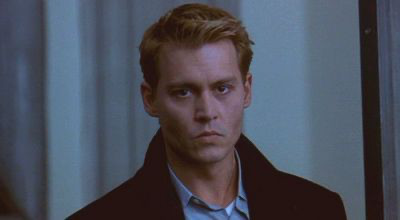

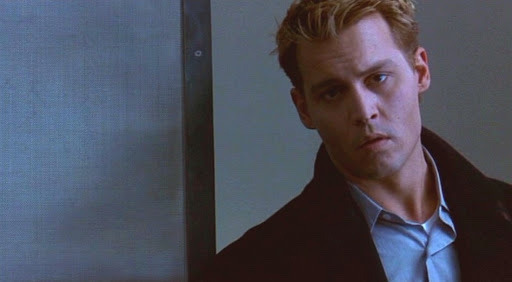
Johnny Depp as Commander Spencer Armacost in The Astronaut’s Wife (1999) dir. Rand Ravich
#spencer armacost#the astronaut's wife#johnny depp#actor#icon#celeb#musician#iloveyoujohnnydepp#rand ravich#1999#1990s#late 1990s#1990s films#1990s movies#1990s actors#1990s hollywood#1990s icons#science fiction
18 notes
·
View notes
Text


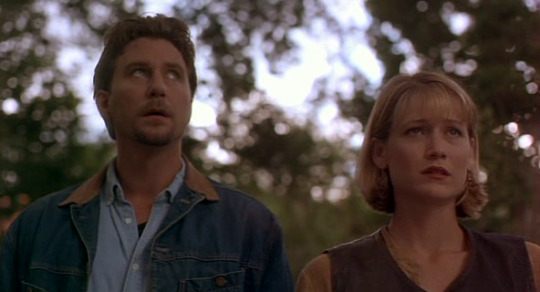






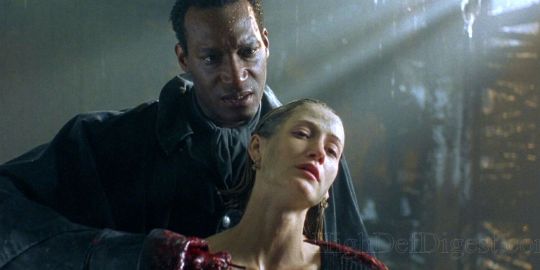
Candyman: Farewell to the Flesh (Candyman 2, 1995)
"Do I believe in Candyman? I believe in the myth. But the fact, the flesh and blood? No. I'm afraid not."
"Prove it."
#candyman: farewell to the flesh#candyman 2#horror imagery tw#gore tw#slasher film#bee tw#1995#bill condon#mark kruger#rand ravich#tony todd#kelly rowan#veronica cartwright#fay hauser#bill nunn#david gianopoulos#william o'leary#matt clark#timothy carhart#michael culkin#philip glass#as a sequel to the og Candyman‚ it's worth saying that this entirely lacks the significance‚ the weight‚ the artistry and the impact of#that film.... but... unexpectedly this is actually really fun? don't believe the sour reviews‚ as a 90s slasher this is compelling‚ well#constructed‚ original.. the effects are admittedly variable (the practical stuff is superb‚ the early cgi in the finále woeful) and the#feel is tackier (a much greater reliance on jump scares and fake outs) but the cast is strong and the characters are likeable#and it uses a new setting and a new exploration of similar themes to tell a new story and damn it it's a good time! special mention to#veronica cartwright whose sickly southern belle is wonderfully complicated and three dimensional. of course Tony Todd is mvp#as always‚ even if the film does strip a little too much of the mystery away from his character; he's still a force of nature#oh and the design is great! decaying mansions‚ muddy floods‚ mardis gras skulls and candles.. a great looking film fr fr
7 notes
·
View notes
Text
The Astronaut’s Wife (1999)

While I didn't enjoy this film, that doesn't mean you won't. No matter what I say, the people involved in this project did it: they actually made a movie. That's something to be applauded. With that established...
Rosemary’s Baby is given a fresh coat of paint in The Astronaut’s Wife. Well, theoretically anyway. Neither sexy nor scary, it’s the kind of movie that might’ve had potential but didn’t even try. Talk about a letdown.
After a communications blackout while orbiting the earth, NASA astronaut Spencer Armacost (Johnny Depp) returns home to his wife, Jillian (Charlize Theron), and vows never to fly again. When his co-pilot Streck (Nick Cassavetes) suddenly dies and Spencer begins exhibiting strange behavior, Jillian wonders if he's still human, and what sort of baby is growing inside her.
If you’ve seen Rosemary’s Baby there’s no reason to see this film. If you haven’t you may not be able to foresee the story’s beats… but I doubt it. Everything it does you’ve seen better elsewhere. We’re supposed to wonder whether Jillian is imagining the strange noises she hears coming from the radio, if Spencer’s radical personality shift is nothing to be alarmed about and if Dr. Sherman Reese (Joe Morton)/his theories are pure hogwash. You never do. There is simply too much evidence siding towards the theory of Spencer having been replaced or somehow possessed by some kind of extraterrestrial being. You would only believe him human if a) we received concrete proof that Marzoids don’t exist b) someone proved they do exist but have better things to do than spawn human-alien babies or c) Jillian was just a straight jacket away from the loony bin or otherwise untrustworthy. You might’ve been able to get away with it if the character of Sherman Reese wasn’t there. As a matter of fact, why is he in this movie?
The Astronaut’s Wife would’ve been better if it were worse. You’ve got Johnny Depp. You’ve got Charlize Theron. It’s about a woman who thinks she’s been impregnated by a little green man but there’s no nudity and no tantalizing sex scenes. Talk about lame. I was bored waiting for the film to catch up to what I already knew. I know you’d be bored too. The only thing that could have saved this movie was a brilliant conclusion.
The ending is a double whammy of lame horror-wannabe twists which will have you rolling your eyes. No satisfying answers are given, and nothing cool is shown. It really is a generic “is my baby the devil?” movie where someone did a find-replace to switch “Satan” with “Spaceman”.
I guarantee after it’s done, no one who saw The Astronaut’s Wife will give it a second thought, even if they do manage to stay awake during the whole thing. When you leave the audience fondly looking back at Species 3, you’ve got problems. (On VHS, March 15, 2019)
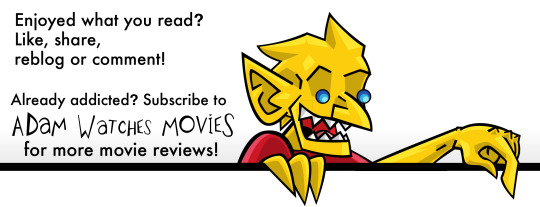
#The Astronaut's Wife#movies#films#movie reviews#film reviews#Rand Ravich#Johnny Depp#Charlize Theron#Joe Morton#Clea DuVall#1999 movies#1999 films
2 notes
·
View notes
Text
The Astronaut's Wife - Rand Ravich
Scheda IMDB
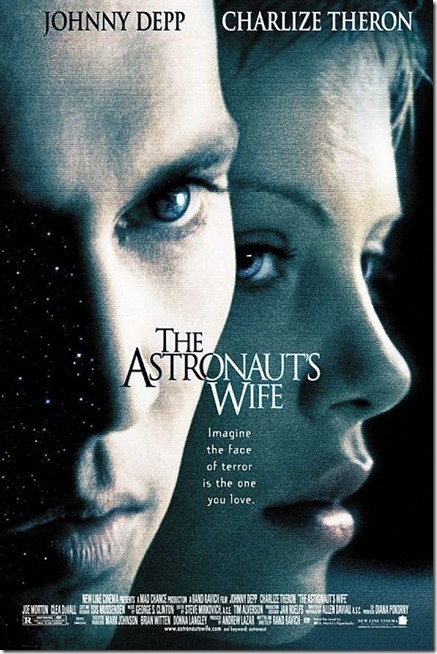
View On WordPress
0 notes
Photo

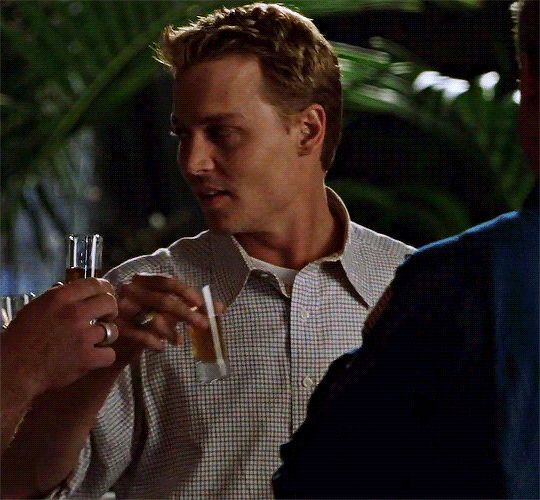


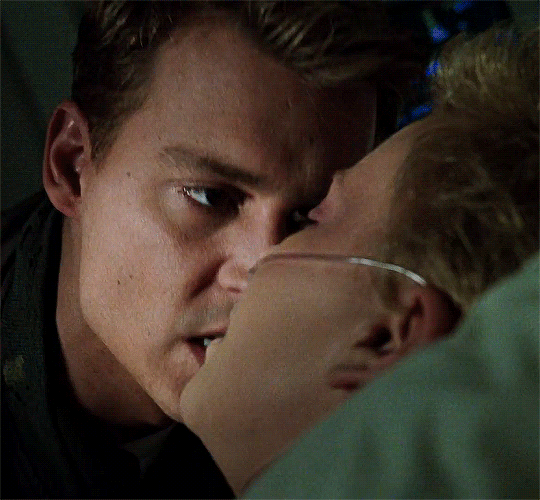
JOHNNY DEPP as Commander Spencer Armacost
The Astronaut’s Wife (1999), Dir. Rand Ravich
#johnny depp#the astronauts wife#moviegifs#movieedit#movie gifs#movies#**#**gifs#actor#gifs by me#johnny depp gifs#ׂׂૢ
100 notes
·
View notes
Text
The Astronaut's Wife (a Film Review)
Negative Reviews Aren’t Necessarily a Bad Thing
Prompted by Tubi to finally watch The Astronaut’s Wife before it left the streaming platform on Friday, June 3oth, I went into it kind of expecting a less than stellar film. I was, however, cautiously optimistic that I’d like it. I was hoping to find one of those rare gems of filmmaking that I’d, at the very least, respect and appreciate, and maybe even love. Those type of experiences don’t happen often, but when they do, it’s worth every second to risk it. To better illustrate my point, it’s entirely possible that I might not have tried it at all, were it not for the film’s alleged saving grace: the performances.
According to pretty most reviews, (both professional and everyday consumers,) the one quality that saves it from being tossed in the proverbial rubbish heap is the performances of its stars, Johnny Depp and Charlize Theron. They’re said to be on-point. That alone convinced me.
”What I am is a true American hero. Now, the President of the United States of America said that, and you heard him.”
Written and directed by Rand Ravich, The Astronaut’s Wife reeled me in with its opening scene, and it isn’t long before I’m transported by it. Some of those first scenes are beautiful to behold, and I don’t compliment it lightly. It’s fascinating to simply watch the actions of the main players and listen to their carefully chosen words. It’s through those that the audience learns about the close-knit relationship between Depp’s Spencer and Theron’s Jillian, whom he affectionately refers calls Jill. Their marriage is complicated, and is seemingly made stronger by their mutual respect and a deep, admirable love. There’s a lot at stake, and in Ravich’s directorial debut, he makes those stakes clear.
Par for the course, it’s not long before everything they thought they knew and believed to be true comes crashing down like a riotous game of Jenga. Their world can only implode. The latter is emphasized for dramatic effect, because one of the common criticisms speaks directly toward this. With an approval rating of just fifteen percent on Rotten Tomatoes, and an audience score of thirty-three percent, the critic’s consensus is that the film “moves at a snail’s pace and fails to generate enough intrigue to keep viewers interested.”
Not to be dismissive of many, highly regarded reviews (even Siskel & Ebert said that while they didn’t hate The Astronaut’s Wife, untilmately they were apathetic towards it,) but the first act isn't meant to fly by with lightening-quick speed. It’s just not. Furthermore, the pacing is near perfection. In fact, I wouldn’t object to a little more time with Mr. and Mrs. Armacost, to sit with them before the inevitable craziness ensues. Instead of a plot moving at breakneck speed, it’s a predominantly taut, psychological thriller set in a similar vein as The Invasion of the Body Snatchers, with a fairly even balance of science fiction and horror.
As the title suggests, the main focal point revolves around Jillian, as it explores the impact on her psyche and her physical and mental well-being. Theron gives everything to her portrayal of the doting wife and the passionate educator. In many ways, she’s the victim, though she doesn’t come across as such. She has to be the pillar of strength, because her character is intentionally left in the dark and she has to discover what really happened in those mysterious two minutes of her husband’s failed mission. There’s more to everything at stake for her character, but anything more would spoil it. One scene, in particular, between Spencer and Jill, was extremely moving and contrary to many criticisms, the dialogue is on-point. It’s powerful, relatable, and it never feels disingenuous. There’s a strong resemblance to real life to it, almost as though it was taken from an actual conversation.
None of it seems unrealistic or far-fetched, despite it being science fiction. And that’s saying a lot, because there are plenty of stories in the genre that feel a little unrealistic, and require the suspension of disbelief. I’m not even entirely certain how the filmmakers made it seem so grounded in reality, while simultaneously keeping solid ground in the speculative nature of the story. In response, I can only shake my head in disbelief, wondering if the naysayers somehow forgot that it’s predominantly sci-fi, a genre that almost celebrates the improbable, the unnatural, and the fantastical. Plus, it’s fiction. Escapism at its finest. Making sense or being completely logical isn’t always a necessary ingredient. Why else do we consume fiction, if not for escapism?
Actually, with the exception of the ending, there isn’t a lot that’s extravagant or impossible. But I love the dramatic culmination of events. It doesn’t really bother me that what took place can’t happen like it did. In context with everything that came before, the resolution felt natural, like it was meant to be. Earnestly, I can’t imagine it ending any other way.
”There is something I need to tell you, Jill...About what happened. All there was...was the cold. I knew what the cold was...it was death. Then the cold faded and then I felt warmth. It was the warmth of you.”
Now, was the basic concept of the film unoriginal? To some extent, yes. Frankly, it’s something that the sci-fi/horror community has seen many times. At the same time, though, it’s not always about originality. Sometimes, execution takes precedence, and I love that about this film. The thing I appreciate most about The Astronaut’s Wife is that its emphasis is on the characters (Jill, specifically,) as opposed to the Other. There’s a beautiful examination of what it means to be human, to be flawed as well as moral. Whereas a lot of stories have a tendancy to simplify good and evil, the film seems to cast a spotlight of understanding on both sides of the coin, and that’s very refreshing.
The outstanding performances weren’t limited to Johhny Depp and Charlize Theron, either. Girl, Interrupted’s Clea DuVall’s portrayal of Jillian’s empathetic sibling was nothing short of moving, and my appetite for her scenes insatiable. And almost juxtaposed with DuVall’s Nan was Joe Morton’s Sherman Reese (Speed,) a disgrunted NASA representative who might or might not be in his sound mind.
Needless to say, I love everything about this film. The cinematography is beautiful. The haunting notes of the score is the perfect accompaniment, complete with a sense of palpable dread and suspense. The special effects are neither over or underdone, and kudos to all involved for not making it look or feel like CGI. I could go on and on, but reading my high praises is probably starting to sound repitive and nauseating, so I’ll wrap this up.
If you’re at all curious, I encourage you to give The Astronaut’s Wife and chance and form your own opinions. You might just find another film that you enjoy. If not, then at least you can honestly say that you saw it, didn’t like it, and give your reasons why. If nothing else, go into it strictly for the rock star performances. I hope that I never forget this underrated, extremely polarizing film.
Rating: 5/5 stars
#filmreview#sci-fi#horror#directorialdebut#charlize theron#johnnydepp#polarizing#underrated#clea duvall#space#formyourownopinions#tubi#streaming#my first tumblr post
5 notes
·
View notes
Text
Cumpleaños 🎂

Charlize Theron, feliz cumpleaños a la diva de Hollywood que hoy cumple 48 años
Feliz cumpleaños a Charlize Theron que hoy, lunes 7 de agosto de 2023, cumple 48 años.
Nacida en Benoni, Sudáfrica, en 1975, la diva de Hollywood -ganadora del Oscar por ‘Monster’- pasó su infancia en la granja de sus padres, que son ricos terratenientes y dueños de una empresa de construcción de carreteras.

A la edad de seis años comenzó a tomar clases de baile. A los trece años se inscribió en un internado en Johannesburgo, donde pudo perfeccionar aún más sus habilidades como bailarina. A los quince años, un hecho dramático trastorna su vida: su madre dispara a su marido, violento y alcohólico, en defensa propia, matándolo.

En 1991, después de ganar un concurso local para aspirantes a modelos, a Charlize se le ofreció la oportunidad de comenzar a modelar. Así que se va a Milán y trabaja como modelo durante un año, antes de darse cuenta de que el papel de los ‘cambios de belleza’ la aburre profundamente. Así que, encontrándose en Nueva York por trabajo, decide quedarse allí y volver a su primer amor, la danza, con el Joffrey Ballet.

Justo cuando parece que va por buen camino, su carrera como bailarina se ve truncada por una lesión en la rodilla. A los 18, Charlize tiene que empezar de nuevo.
Haciendo caso a la insistencia de su madre, se fue a Hollywood donde en 1994 John Crosby, un agente que representaba a Renee Russo y John Hurt entre otros, se fijó en ella mientras discutía con un empleado del banco que se negaba a pagarle un cheque. Impresionado, le deja su tarjeta de presentación. Ocho meses después, Charlize hace su debut en la pantalla grande.

Después de que Elizabeth Berkley fuera preferida a ella para el papel principal de ‘Showgirls’ (una exclusión afortunada, considerando el fiasco de la película), fue elegida para ‘Dos días sin aliento’ (1996). Mientras tanto, comienza a tomar lecciones de actuación.
Sólo un año después, su carrera actoral recibió un impulso definitivo con la participación en ‘El abogado del diablo’, junto a Al Pacino y Keanu Reeves. En 1998, aparece en ‘Celebrity’ de Woody Allen (para la que también protagonizó ‘The Curse of the Jade Scorpion’) y en el cuento de hadas de Ron Underwood ‘Big Joe’.

En 1999 protagonizó la película de ciencia ficción ‘La mujer del astronauta’ de Rand Ravich, en la que es la esposa de Johnny Depp, y participó en ‘Las normas de la casa de la sidra’ de Lasse Hallström, multinominada al Oscar. En 2004, gracias a la interpretación de la asesina múltiple Aileen Wuornos, ganó varios premios a la Mejor Actriz, entre ellos el Oscar, el Oso de Plata en Berlín y el Globo de Oro (categoría de película dramática).
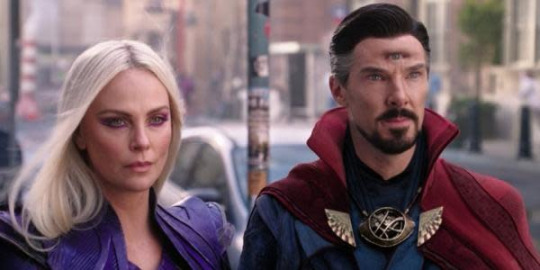
Entre sus papeles más aclamados por la crítica también se encuentran las dos colaboraciones con el director Jason Reitman, la primera para Young adult (2011), y la segunda para Tully (2018), melancólica historia de una mujer en crisis inmediatamente después del nacimiento de su tercer hijo. hija; ambos papeles le valieron a la actriz una nominación al Globo de Oro.
Embajadora de la ONU, es miembro de organizaciones de mujeres y derechos de los animales, como PETA. Es madre de dos hijas, Jackson y August, ambas adoptadas. La última relación importante de la actriz nacida en Sudáfrica fue con la estrella Sean Penn en 2015.

3 notes
·
View notes
Text
Five concepts were eventually selected and put into development. All were prequels set before the events in Thrones. This unprecedented bake-off approach would become cheekily known online as The War of the Five Pitches.
One effort was a script about the destruction of the ancient Targaryen empire of Valyria by Max Borenstein (Kong: Skull Island), another was a take on the Dornish warrior queen Nymeria by Oscar winner Brian Helgeland (L.A. Confidential) and yet another — like much in this story, never before reported — was about Aegon’s conquest of Westeros and penned by Rand Ravich and Far Shariat (The Astronaut’s Wife). That script portrayed the William the Conqueror-inspired figure as a drunken lout.
[Source]
16 notes
·
View notes
Text
-La mujer del astronauta. (La cara oculta) Rand Ravich
Los monstruos
1 - Bebés muertos
Un verano, un verano bizarro como pocos, me pescó leyendo el trabajo de Allouch sobre el duelo. Se trataba sobre “Ajó, el monstruo del cielo”, el relato de Kenzaburo Oé. Ese mismo verano cayó en mis manos una copia en video de “Gothic”, la película de Ken Russel, y esa sola y larga imagen que ofrece la clave del monstruo. El bebé, tal vez el feto, que se balancea lentamente en el agua. Ojos y boca hinchados, sellados, casi cosidos, el bebé muerto se mece suavemente entre las plantas acuáticas, en el fondo del río. Esa es, en la versión de Russel, la razón de la escritura de Frankenstein.
La pregunta entonces se presentó así: ¿Cómo es que un bebé muerto -en la Inglaterra del siglo XIX y en el Japón actual-, da por resultado un monstruo?
Y un monstruo no es una cosa frecuente.
“Ajó, el monstruo del cielo”, es uno de los tantos relatos de Oé que rondan sobre la paternidad y la monstruosidad de su hijo, nacido con un tumor en la cabeza tan gigantesco que parecía una “segunda cabeza”. En el relato, el padre -en idéntica situación que el autor- deja morir al niño que necesitaría una extensa cirugía para sobrevivir convertido en un vegetal. Ese monstuo-bebé innominado persigue desde el cielo al padre alucinado.
También el monstruo de Mary Shelley persigue al Dr. Frankenstein hasta el polo norte, reclamándole la paternidad y no haberle dado siquiera un nombre.
En ambos casos el monstruo no tiene nombre, en ambos casos ejerce una extensa e implacable persecución de un padre en falta.
A los 17 años de edad, prófuga junto a un hombre casado, Mary Wollstonecroft -que sólo años después sería Mary Shelley- dio a luz a un bebé. La situación no era precisamente confortable. Harriet, la esposa legítima de Shelley, había dado a luz unos meses antes que ella. La pareja estaba en fuga de sus familias, escondiéndose de los acreedores, y sosteniendo la relación entre ellos en unas inestables configuraciones triangulares. No debía carecer de resonancias allí la otra Mary Wollstonecraft, madre de Mary, mujer renombrada tanto por su brillo intelectual como por lo escandaloso de su vida. El primer embarazo de la madre de Mary también cursó en plena fuga con un hombre que, si bien no era casado, la abandonó para casarse con otra mujer durante los primeros meses de pregnancia. Su segundo embarazo la mató -aparentemente por una septicemia- tras el nacimiento de Mary.
La bebé que Mary (hija) dio a luz se llamó Clara, y tenía alrededor de diez días de vida la noche del episodio que Ken Russell no relata pero al que alude. Mary se levanta en mitad de la noche, y se acerca silenciosamente a la cuna, con una lámpara en la mano, para amamantar al bebé. Pero algo la detiene. No toca al bebé ni le da de mamar. Vuelve a su cama y se acuesta sin haber visto lo que había que ver dentro de la cuna. Algo “evidente por su apariencia”, que ella, mirando, no puede ver.
Al día siguiente escribe:
“ Mi querido Hogg mi bebe está muerto - vendrás tan pronto como puedas? - quisiera verte - Estaba perfectamente bien cuando me fui a la cama - desperté en la noche para darle de mamar, parecía estar durmiendo tan quieto que no lo desperté - estaba muerto entonces pero no lo descubrimos hasta la mañana - por su apariencia evidentemente murió de convulsiones. - Ven - eres una criatura tan calma y Shelley teme la fiebre de la leche - por mí que ya no soy madre ahora”.
Este episodio, poderosamente siniestro, se sitúa en los cimientos de su larga construcción, letra tras letra, del monstruo del Dr. Frankenstein. Pearcy y Mary Shelley fueron, hasta la muerte del primero, una pareja tan prolífica en literatura como en niños muertos.
El niño de Kenzaburo Oé, por su parte -a diferencia del de su personaje en “Ajó, el monstruo del cielo”-, no murió de manera efectiva. Sin embargo, en la disyuntiva entre dejarlo morir o lanzarlo a una vida de vegetal, hay, en efecto, una muerte ineludible. El bebé de Kenzaburo era directamente y efectivamente un monstruo. El escribe:
“Como una planta acuática en la penumbra, tumbado con los ojos abiertos e inexpresivos, no era más que una presencia callada. (...). Ni siquiera lloraba. A veces dudada de que estuviera vivo.”
Cuando fueron a buscarlo tras un mes de internación el bebé estaba tan cambiado que apenas lo reconocieron: “Es como si le hubieran hecho algo horrible. Me sentí más alejado de él que si hubiera muerto. Total, que nos volvimos con las manos vacías”.
Es claro que se trata de un bebé muerto, tanto como en el personaje del padre del monstruo del cielo.
2 - Un monstruo cinematográfico
Las extrañas relaciones entre bebé y monstruo están bastante bien establecidas en los clásicos temores de la pregnancia, e incluso en el lenguaje común: el monstruo es una “criatura”; de alguien particularmente feo y deforme se dice que es “un feto”.
Es muy difícil en esta circunstancia no verse invadido por los grandes monstruos cinematográficos de nuestra época que apuntan, precisamente, en esa misma dirección. Una monstruosidad que mostró eficacia masiva no hace una década lo muestra claramente. ¿A quién no se le cortó la respiración cuando el Alien, perforando el tórax de su portador, saltó chillando hasta la mesa donde el desayuno transcurría amablemente?
Veamos brevemente qué sabemos de ese monstruo. Hay primero que nada un episodio de inseminación, por vía oral. El monstruo se desarrolla lenta y sigilosamente dentro del cuerpo de su anfitrión, alimentándose pacientemente en sus entrañas hasta que está en condiciones de sobrevivir por su cuenta. Entonces irrumpe desgarrando huesos, bañado en sangre, listo para matar.
Este relato es ni más ni menos que una teoría bizarra sobre la concepción y el alumbramiento que -como para darle el gusto a Freud- ignora la existencia de la vagina. Es lo más parecido a una teoría sexual infantil.
Por si a alguien le quedan dudas sobre las resonancias del octavo pasajero, las siguientes películas de la saga se ocupan de explicitarlo más y más. En la tercera película la Teniente Rippley debe hacerse una ecografía para definir si porta un alien o está embarazada. En la cuarta ella -que entretanto ha adquirido un ligero aire monstruoso- enuncia con claridad: “I’m the mother´s monster”.
Sin embargo, y curiosamente, la segunda película de la saga del Alien, presenta una inversión. El monstruo se devela en la imagen de una abeja reina que comanda el horror rodeada por sus huevos. La identificación es indudable: Eso es una madre. Para confirmarlo, como casualmente, aparece allí una niña, atrapada en su telaraña babosa, en pleno proceso de degradación orgánica, de disolución.
Pero en este caso también se da otra inversión. No sólo la “criatura” perseguirá a la Teniente Rippley hasta el último confín de la galaxia, sino que también la Teniente Rippley perseguirá a la “criatura”.
De más está decir que el Alien, como los monstruos literarios con que tropezamos más arriba, tampoco tiene nombre.
Estas son, como mínimo, unas convergencias curiosas tratándose de monstruos tan diferentes.
3 - La forma
Esto nos tienta a seguir explorando en algunas constantes del género cinematográfico. Género, por otra parte, repleto de constantes. Y la primera que salta a la vista es la cuestión de la forma del monstruo. La monstruosidad incluye por implicación a lo de-forme. Sin embargo la literatura cinematográfica va más allá. Incluye un slogan clásico que tiene el valor casi de una definición:
“Terror has no shape”
Este es el anuncio de un gran clásico del Terror: La Mancha
La incidencia de esta persistente fatalidad en el poeta, Pearcy Shelley, se presenta también en el registro de lo siniestro. Luego de la pérdida del cuarto bebé -en este caso nonato- Shelley sucumbió a extraños sueños angustiosos y alucinaciones. Mary y Edward Williams dan testimonio de algunas de estas visiones:
“Mientras andaba por la terraza, su propia imagen le salió al paso y le dijo: ¿Cuanto tiempo piensas estar satisfecho?”
3 notes
·
View notes
Text
Second Chance (2016 TV Series) Season Review | Unrealized Potential
I re-watched #SecondChance, and the concept, storylines and performances still hold up. I totally recommend for all sci-fi and crime drama fans.
#TVSeries #Lokinglass #ScienceFiction @adhirkalyan @DilshadVadsaria @RobertKazinsky
Rand Ravich (Creator)CASTRobert KazinskyDilshad VadsariaAdhir KalyanCiara BravoVanessa LengiesTim DeKay
Review
This short-lived science-fiction crime drama is a series that I’ve re-watched a few times. It’s a clever modernization of Mary Shelly‘s Frankenstein which follows the story of Jimmy Pritchard, a 75-year-old former disgraced sheriff, played by Philip Baker Hall, who is murdered during a…

View On WordPress
#Adam DiMarco#Adam Kane#Adan Canto#Adhir Kalyan#Allison Miller#Amanda Detmer#Based on a book#Based on a novel#Book adaptation#Book to TV#Brad Turner#Breckin Meyer#Carmen Moore#Ciara Bravo#Crime#Dan Buran#derek webster#Diana Bang#Dilshad Vadsaria#Donny Lucas#Drama#Far Shariat#Félix Enríquez Alcalá#Frankenstein#Frankenstein or The Modern Prometheus#Gwendolyn M. Parker#Henri Lubatti#Howard Gordon#Jenna Romanin#Jennifer Lynch
0 notes
Text

Day 1- The Astronauts Wife
‘After an explosion in space and subsequent two-minute radio-out period, two astronauts return home to their wives. Slightly it's revealed that they're not the same as they were’
0 notes
Text

Johnny Depp as Commander Spencer Armacost in The Astronaut’s Wife (1999) dir. Rand Ravich
#the astronaut's wife#commander spencer armacost#spencer armacost#charlize theron#rand ravich#johnny depp#actor#icon#celeb#musician#iloveyoujohnnydepp#1999#1990s#1990s films#late 1990s#1990s movies#1990s actrors#1990s icons#1990s hollywood
8 notes
·
View notes
Text
Candyman: Farewell to the Flesh (1995)


ESE: 87/100
50
+5 for Helen
+5 for refresher on Candyman history
-10 for not getting Helen’s story right entirely
+10 for Tony Todd
+5 for Mardis Gras
+5 for “carnival” meaning “farewell to the flesh”
+10 for the public sex
+5 for the Candyman theme music
+5 for the Candyman artwork
-10 for summoning Candyman like a total dumbass
-5 for bees
+5 for the Kingfisher
-10 for shooting poor Ethan
+5 for Candyman’s story
+10 for the kids saving Annie
+5 for Annie’s daughter, Caroline
+2 for Caroline’s freakin’ awesome room
-5 for not teaching your kid to NOT summon Candyman
#Candyman: Farewell to the Flesh#90s movies#90s films#fantasy#horror#Bill Condon#Clive Barker#Rand Ravich#Bill Nunn#Tony Todd#Matt Clark#William O'Leary#Kelly Rowan#David Gianopoulos#Faay Hauser#Joshua Gibran Mayweather#Timothy Carhart#Veronica Cartwright#Caroline Barclay#Michael Bergeron#movies#films#world record#review
13 notes
·
View notes
Photo
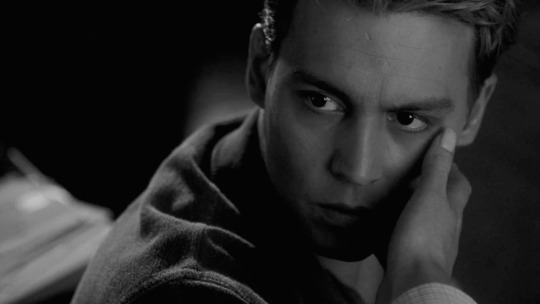

The Astronaut’s Wife (1999), directed by Rand Ravich
#Johnny Depp#spencer armacost#the astronaut's wife#rand ravich#science fiction#stare#eyes#lethal#romance#psychological#man
128 notes
·
View notes
Quote
The few times other characters suggested they might be a couple, Crews looked confused and Reese looked horrified. Damian Lewis and Sarah Shahi had great chemistry together, but chemistry doesn't always have to be romantic.
Alan Sepinwall
#Quote#Quotes#TV Review#TV Reviews#Alan Sepinwall#Life#Damian Lewis#Sarah Shahi#Rand Ravich#Charlie Crews#Dani Reese#Partners#los angeles#Detectives#Finale#Gone Too Soon#Season Finale#Subtle Humour#Subtle Humor#Cheeky Humour#Cheeky Humor
5 notes
·
View notes
Photo
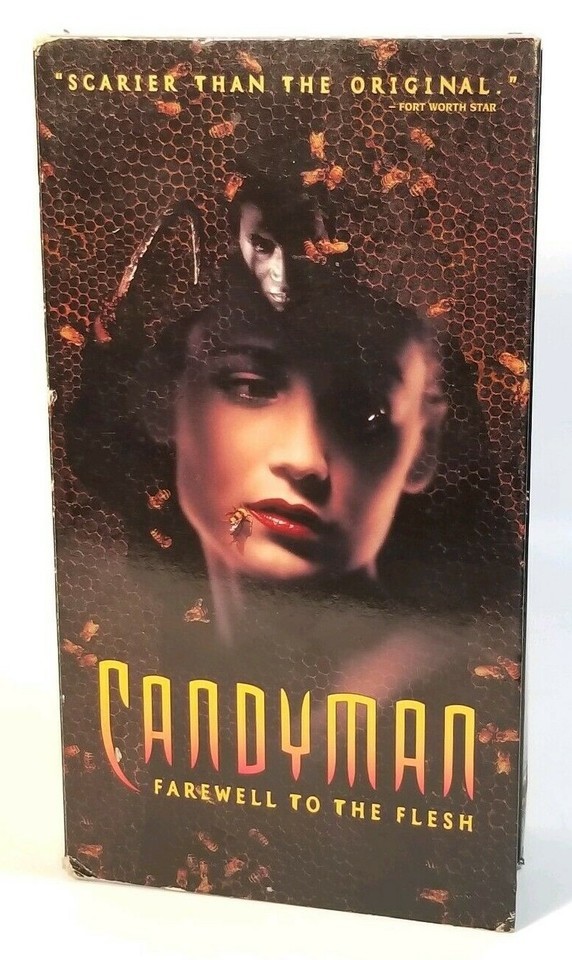


21 notes
·
View notes